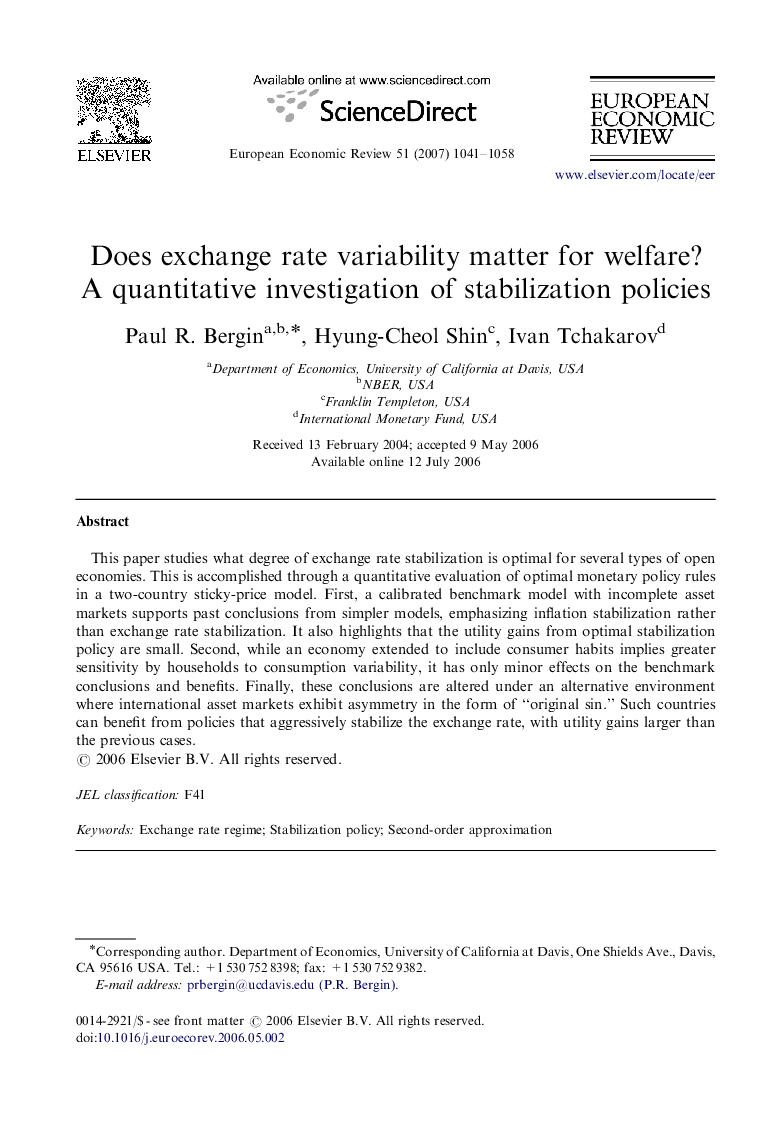| Article ID | Journal | Published Year | Pages | File Type |
|---|---|---|---|---|
| 5067613 | European Economic Review | 2007 | 18 Pages |
This paper studies what degree of exchange rate stabilization is optimal for several types of open economies. This is accomplished through a quantitative evaluation of optimal monetary policy rules in a two-country sticky-price model. First, a calibrated benchmark model with incomplete asset markets supports past conclusions from simpler models, emphasizing inflation stabilization rather than exchange rate stabilization. It also highlights that the utility gains from optimal stabilization policy are small. Second, while an economy extended to include consumer habits implies greater sensitivity by households to consumption variability, it has only minor effects on the benchmark conclusions and benefits. Finally, these conclusions are altered under an alternative environment where international asset markets exhibit asymmetry in the form of “original sin.” Such countries can benefit from policies that aggressively stabilize the exchange rate, with utility gains larger than the previous cases.
